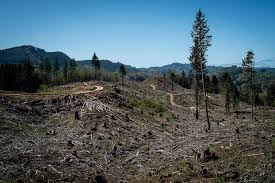NEVER AGAIN: Comment on new NEPA rules by Monday Aug 26

NEPA is under siege
Please comment on this bone chilling new rule that eliminates your say on the management of public lands and natural resources. It will eliminate public input on over 90% of mining, logging, drilling, and road building on public lands.
NEPA guarantees the national public and local residents the chance to comment on proposed actions by government agencies. It also requires rigorous scientific analysis to determine effects and cumulative effects of projects on the environment. The Forest Service states that “in certain circumstances the environmental effects of some restoration activities have not been individually or cumulatively significant” to the environment. To streamline those “certain circumstances” and “some restoration activities” the federal government has proposed a rule that will take away public comment on over 95% of all proposed projects. That is a lot more than “some.” This removes vital input and thorough scientific analysis that protects residents, wildlife, fisheries, and our clean drinking water. Don’t let them take away your say on what happens on your public lands.
Comment by Monday, August 26.
Comment Here: https://www.regulations.gov/document?D=FS-2019-0010-0001
Just click the comment now button and add your voice. If you have any issues with submitting at the portal you can e-mail: nepa-procedures-revision@fs.fed.us
Please note: The federal government is discounting form letters and comments with similar wording, so please take these talking points and put them in your own words. Thank so much for taking the time to do this. The first 5 talking points are general and if you are short on time, use those. The rest go into more detail and have more explanation. If you have time, add those. The more specific the comment the better.
Talking Points:
- Ask for a chance to comment and have a say on decisions that affect public lands.
- Oppose the changes to NEPA. It is protecting public lands and resources including 80% of the public’s clean drinking water sources on forest lands.
- Ask for the removal of current Categorical Exclusions (CE) and no new CEs.
- Ask for more emphasis on protecting wildlife and habitat not less.
- Ask for more emphasis on climate change and preserving carbon stores when making decisions concerning public lands.
- Please tell the agency that Categorical Exclusions CEs must require public notification and scoping prior to implementation of the project. This new rule will eliminate public notification and public scoping allowing citizens to comment on the project before it is implemented. This new rule merely requires CEs be listed on the SOPA document. The agency is only required to update SOPA quarterly, so projects could be completed before the public knows they exist.
- Tell the agency that Categorical Exclusion’s size should be reduced not increased. CEs have been expanded to include projects 7300 acres in size that include 4200 acres of commercial logging as long as they include one restoration add on like replacing a culvert to restore fish passage. This would allow 6.6 square miles of commercial logging without public notice or public comment. That is equivalent to over 3000 football fields.
- Tell the agency to decrease not increase road construction or reconstruction in Categorical Exclusions. Existing CEs allow no more than one mile of road construction/reconstruction. The new rule extends that to five miles of new road construction and up to ten miles of reconstruction of official Forest Service system roads or trails. The federal government has a backlog of 54 billion dollars in road improvements. Failing roads pour sediment into blue ribbon fishing streams, reduce the quality and quantity of water, and affect native trout populations. They can cause debris flows similar to the one experienced on the Willow Creek road a few years ago. Agency policy has been to stop creating permanent system roads and to implement projects with only temporary roads that are decommissioned after the project.
- Tell the agency not to reward illegal trail creation and continue to thoroughly analyze environmental effects of trails added to the system. CEs will allow illegally created off-road vehicle ORV routes to be made official with no analysis or public input. For decades, agency policy has been to create an ecological and financially sustainable road and trail system and ensure that ORV route designations minimize impacts to resources and conflicts with other recreational users.
- Tell the agency to strengthen not weaken conditions that would make projects ineligible for Categorical Exclusions. The new rule will weaken “extraordinary circumstances”. If a proposal implicates “extraordinary circumstances,” it is ineligible for a CE. The proposed rule will eliminate the presence of sensitive species as an extraordinary circumstance. The proposal will also impose a significantly higher threshold for when extraordinary circumstances exist, requiring a “likelihood of substantial adverse effects to the listed resource condition” and allowing a Forest Service line officer to make this science-based determination without analysis or public oversight.
- Tell the agency to limit the number and location of Categorical Exclusions. The new rule will have no limits on the number of CEs or their locations. Essentially unlimited 4,200 acre commercial timber projects could be implemented side by side without any scientific analysis or public input.
- Tell the agency to continue to analyze all projects based on current science and current conditions. The new rule will adopt determinations of NEPA adequacy (DNA), which is a used to claim that an existing environmental assessment (EA) or environmental impact statement (EIS) adequately analyzes a new and completely different proposed action. This makes no EA, EIS, or even a CE necessary. Often the existing EA or EIS is outdated and/or never contemplated or analyzed the specific impacts of the new proposed action.
- Tell the agency to continue to project Inventoried Roadless Areas (IRAs), potential Wilderness areas and Wilderness Study Areas. The new rule will remove Inventoried Roadless Areas (IRAs) and potential wilderness areas from the classifications that normally require preparation of an EIS. The proposed rule reasons that the Roadless Area Conservation Rule provides adequate protections for IRAs. Damaging projects are often proposed and implemented in IRAs, despite the Roadless Rule. The Roadless Rule itself is under significant threat. Idaho has its own rule and Alaska is working to eliminate restrictions completely. The proposed rule will remove projects in potential wilderness areas (i.e., areas identified in a Forest Service wilderness inventory) from increased public scrutiny and environmental analysis.
- Tell the agency not to allow condition-based-management. The new rule allows for “condition-based management.” This allows the Forest Service to authorize land management activities – often including timber harvest – without first gathering information about the resources that would be affected on the ground. Under this approach, the public would lose a fundamental right under NEPA – the chance to speak up for specific places or resources when they are proposed for logging, mining and drilling.
We need your help!
If you or your friends are concerned about the present and future management of the Bitterroot National Forest, as well as adjoining national forests, now is the time to become personally involved in our organization. Remember, management activity on the BNF affects all of us. Water, water quality, fisheries, wildlife and scenic values, and recreational opportunities—all are at risk.
In 1986, a group of concerned Ravalli County citizens were highly distressed about the size and pace of the Forest's (BNF) logging and road building program. We formed Friends of the Bitter Root (FOB) in 1988. It was apparent that the long and short term impacts on resources such as watersheds, wildlife, fisheries, soils and scenic values were not being considered. The federal laws and regulations pertaining to projects on the forest were given little or no consideration. At the highest administrative levels the mantra and incessant drum beat was “get out the cut” (1970 -1990)!
The involvement of FOB—and other events occurring at that time—helped to scale back the enormity of the impact on other resources in that time period. However, it seems that the circle has now swung back not only to “get out the cut,” but is accompanied by strong and incessant attacks on the federal laws and regulations. This time, the Forest Service and conservation groups have little or no support in Congress or the White House to stave off the onslaught.
We have a skilled and dedicated group of individuals in the FOB steering committee, well-honed after years of working with the BNF and surrounding national forests. Weknow our forest, we know the laws and regulations, and we know how to look for solutions. But we need your help. We need people to be active members who will:
-Serve on the Steering Committee;
-Attend committee meetings;
-Attend F.S. meetings, scoping sessions, field trips;
-Take time to chat with local forest officials about different concerns;
-Let them know we support the agency and want to work with them;
-Do field monitoring of the proposed and ongoing projects; and/or
-Document and report abuses.
Presently, the mission of the National Forest System is under attack by those who would capitalize on the sale of our natural resources. The exploiters are working with the President, the Congress, our state legislators, and local officials; not only to exploit the resources, but to dismantle the whole concept of public lands for the people.
Get involved. Volunteer. Our public lands need your help!
